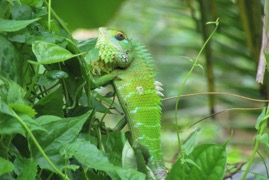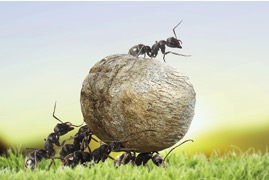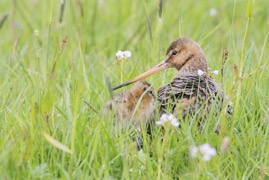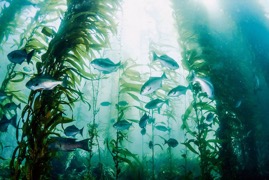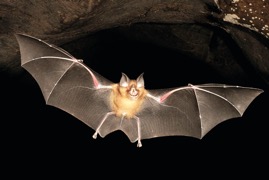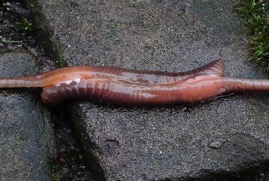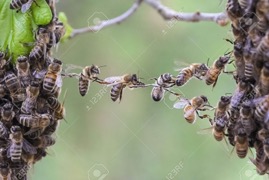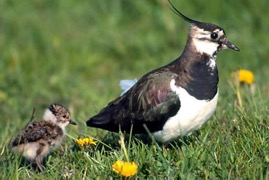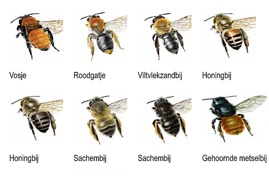Biodiversity
The planet's biodiversity is under threat and the main culprit is the one who, paradoxically, depend on it most: human being. Slowing down biodiversity loss, understood as the reduction or disappearance of the variety of living beings that inhabit the planet, is one of humanity's great challenges. Below, we review the causes, consequences and possible solutions.
As a planet, we are failing to meet all the targets set for slowing down biodiversity destruction by 2020. This is the devastating conclusion of the fifth Global Biodiversity Outlook report published in September 2020 by the Intergovernmental Science-Policy Platform on Biodiversity and Ecosystem Services (IPBES). The document not only warns of the alarming degradation of nature, but points to it as a variable that increases the risk of future pandemics. The Aichi Targets, part of the Strategic Plan for Biological Diversity (2011-2020) established by the United Nations Environment Program (UNEP), were due to be met by the year 2020. This road map set 20 targets to slow down the destruction of the planet's biodiversity, but ten years later, as the report points out, none of these commitments is likely to be fully met, with the consequent negative impact on species, ecosystems and human beings themselves.
Climate change
Climate change impacts biodiversity at various levels: species distribution, population dynamics, community structure and the functioning of the ecosystem.
Pollution
When we talk about pollution, we may think of car exhaust fumes billowing into the atmosphere, but biodiversity is not only affected by this type, it is also affected by noise pollution and light pollution.
Destruction of habitats
Soil pollution and changes in its uses due to activities such as deforestation have a negative impact on ecosystems and the species that make them up.
Invasive alien species
Invasive alien species are the second biggest cause of loss of biodiversity in the world, according to the United Nations Development Programme (UNDP). They act as predators, compete for food, hybridise with native species, introduce parasites and diseases, etc.
Overexploitation of the natural environment
The overexploitation of natural resources, that is, their consumption at a speed greater than that of their natural regeneration, has an obvious impact on the planet's flora and fauna.
Jan de Vries and associates fight to avoid loss and to improve biodiversity. How?.. talk with us!
As a planet, we are failing to meet all the targets set for slowing down biodiversity destruction by 2020. This is the devastating conclusion of the fifth Global Biodiversity Outlook report published in September 2020 by the Intergovernmental Science-Policy Platform on Biodiversity and Ecosystem Services (IPBES). The document not only warns of the alarming degradation of nature, but points to it as a variable that increases the risk of future pandemics. The Aichi Targets, part of the Strategic Plan for Biological Diversity (2011-2020) established by the United Nations Environment Program (UNEP), were due to be met by the year 2020. This road map set 20 targets to slow down the destruction of the planet's biodiversity, but ten years later, as the report points out, none of these commitments is likely to be fully met, with the consequent negative impact on species, ecosystems and human beings themselves.
Effects of biodiversity loss
Biodiversity loss has many consequences, not only for the environment, but also for human beings at the economic and health level. During the presentation of the IPBES report, David Cooper, the Deputy Executive Secretary of the Convention on Biological Diversity, took the opportunity to warn about this in the midst of the COVID-19 crisis: "As we degrade ecosystems, the risk of future pandemics increases."Causes of biodiversity loss
Biodiversity has declined at an alarming rate in recent years, largely as a result of human activity. Let's take a look at some of the main causes:Climate change
Climate change impacts biodiversity at various levels: species distribution, population dynamics, community structure and the functioning of the ecosystem.
Pollution
When we talk about pollution, we may think of car exhaust fumes billowing into the atmosphere, but biodiversity is not only affected by this type, it is also affected by noise pollution and light pollution.
Destruction of habitats
Soil pollution and changes in its uses due to activities such as deforestation have a negative impact on ecosystems and the species that make them up.
Invasive alien species
Invasive alien species are the second biggest cause of loss of biodiversity in the world, according to the United Nations Development Programme (UNDP). They act as predators, compete for food, hybridise with native species, introduce parasites and diseases, etc.
Overexploitation of the natural environment
The overexploitation of natural resources, that is, their consumption at a speed greater than that of their natural regeneration, has an obvious impact on the planet's flora and fauna.
For 50 years, WWF has been protecting the future of nature. The world's leading conservation organization, WWF works in 100 countries and is supported by 1.2 million members in the United States and close to 5 million globally.
Despite al these efforts the world is in far more worse condition than 50 years ago!
Apparently awareness is not enough to change behavior.
Without insects we have only 4 years of food left in the world. Pesticides kill not only insects, they poison the food chain, pollute water and finally kill so much life that there will be no food left to feed the human population.

